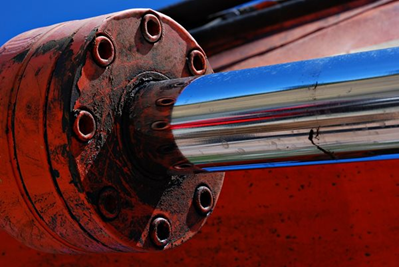How to Get Water Out of a Hydraulic System
Water inhydraulic oil is bad once it exceeds a certain level. If the fluid looks cloudy or milky, it means water has contaminated thehydraulic fluid and it needs to be replaced. Water can cause all sorts of operational problems, including:
- Reduces efficiency
- Causes the system to run hotter than normal
- Increases the risks of cavitation
- Reduces the system’s ability to convert mechanical power into fluid power and vice versa
- Reduces the efficiency of filters
- Creates sludge that can clog lines and filters
.png?width=399&height=323)
Several different methods can be used for getting water out of hydraulic components and the fluid. However, they require specific equipment and tools, such as gravity separation, spinning the fluid in a centrifuge, filtering, and water-absorbent filter elements and/or air breathers.
As such, these processes can be rather time-consuming just to remove water from hydraulic oil. Often, it is easier just to drain and flush the system, after identifying and fixing whatever it is that is allowing water to enter the system.
Should you decide to attempt to remove the water, regardless of the method used, you will need to drain the fluid from the system first. Next, a complete flush of the system is required to ensure all water and emulsified oil has been removed.
The first step is the same whether you decide to flush and replace or flush and clean, in both instances it is vital to fix the fault that is causing the water to enter the system in the first place.
How to Flush Water from a Hydraulic System
- Drain the oil from the system.
- Clean out the reservoir and remove all deposits and sludge.
- Replace the filters.
- Flush the system with a lower viscosity oil.
- Bring the oil to operating temperature and shut the system down.
- Drain the hot flushing oil from the system.
- Flush the system a second time.
- Replace the filters.
- Fill the system with the correct hydraulic fluid about 75% full.
- Run the system to circulate the new fluid using the appropriate methods.
- Check the oil level and refill to the correct level.
- Operate the system for at least six to eight hours.
- Check the oil for signs of water.
- If there is no water present in the fluid, replace the filters.
What if Water Returns?

After flushing the system, if water returns, you will need to pinpoint the cause. Is there a leak somewhere in the system allowing water to get into the fluid? For instance, there could be a cracked gasket. Could there be damp air being drawn into the tank that is condensing on the internal surfaces?
Removing water from ahydraulic system is not difficult. However, if you do not perform regular maintenance checks, the longer it is in the system, the more damage it can cause. So, regular maintenance is vital to identify water in the hydraulic oil sooner rather than later.
Replacement and Custom-Built Hydraulic Parts
For hydraulic system pumps, motors, cylinders, and other related parts and components,
including custom-built parts, please feel free to contact White House Products, Ltd. at +44 (0) 1475 742500 today.
Back to blog posts